YELLOW FLOWERS AT THE END OF SUMMER
After being uniformly green for the rest of the year, the large coastal areas covered with Dittrichia viscosa at the end of the summer get decorated with a multitude of vivid yellow flowers produced by that resilient plant.

The abundance of nectar attracts many insects and everything looks like the second coming of spring.
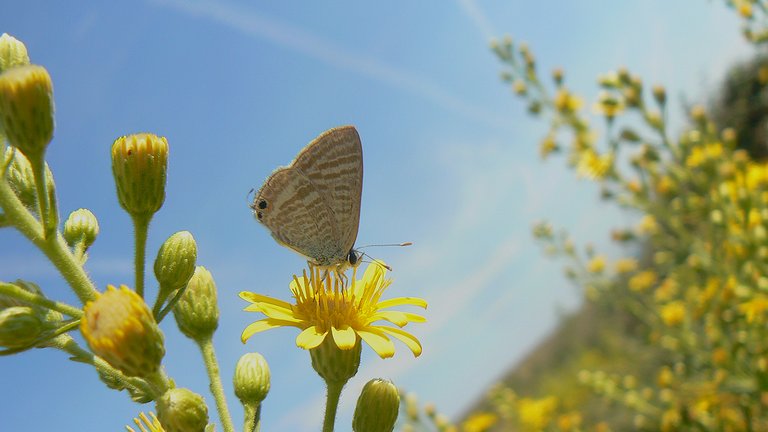
This post tells a short visual story about the seasonal exuberance in the coastal fields and meadows at the end of the summer.
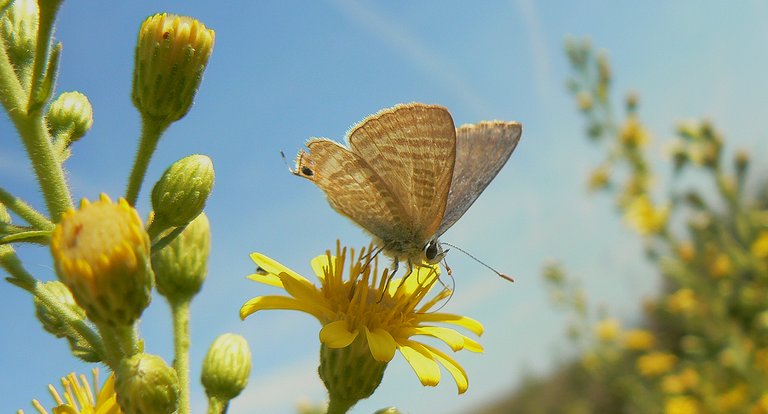
The small butterfly in the opening series of photographs is the Lampides boeticus from the Lycaenidae family ...
... commonly known as the long-tailed blue. The larvae feed on flowers, seeds, and pods of many plants from the Fabaceae family. The adults consume the nectar from a wide variety of flowers that can be found in their habitats.

Celastrina argiolus is another small butterfly from the Lycaenidae family that can be seen feeding on these yellow flowers.

The caterpillars feed mainly on the flower buds of Ilex aquifolium and Hedera helix.
Adults feed on nectar, tree sap, and juices from rotting fruits.
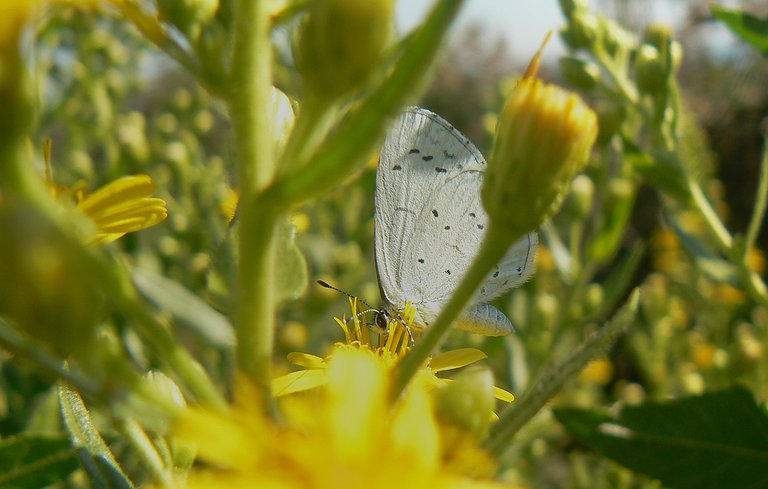
Here you can see the first shot that I took on this occasion. The butterfly was still partially hidden by the dense growth of flowers.
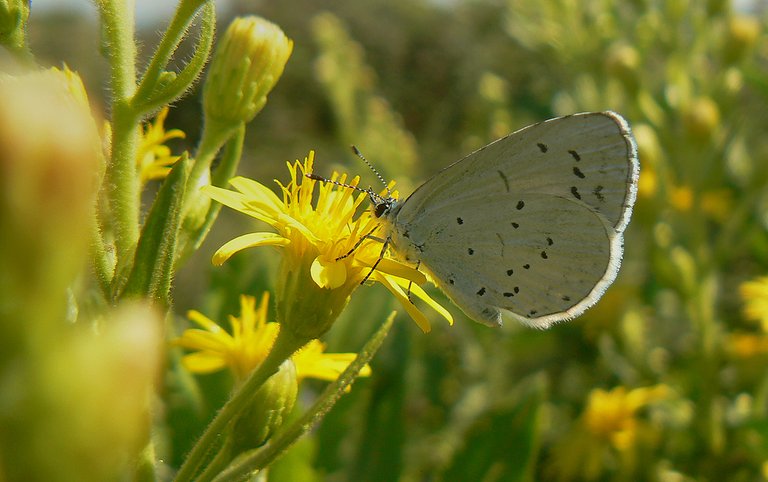
Celastrina argiolus is widespread and common in various habitats throughout Europe. Today, while searching for information to include in the post, I found out that this species is considered the national butterfly of Finland. Whatever that means. It seems that was voted for that title by people in Finland.
The flowers attract some bees too.
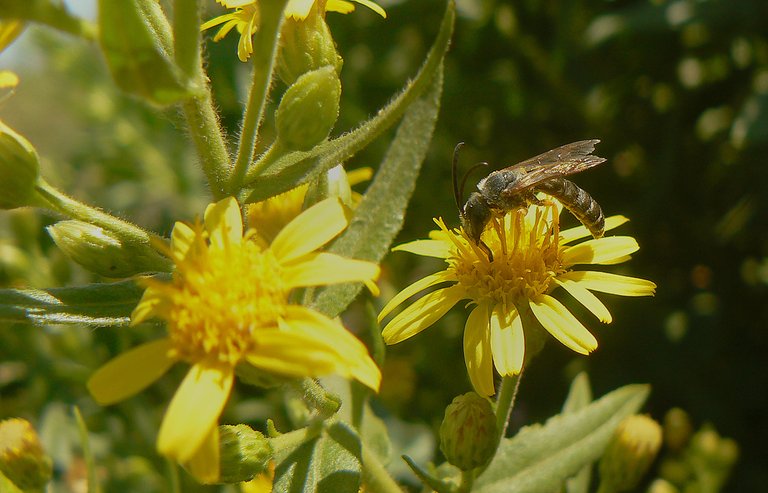
This is the Halictus scabiosae. These bees from the Halictidae family nest in vertical tunnels excavated by females. Usually, each female builds her own tunnel. But sometimes they form fairly large colonies with a relatively loose hierarchy in which smaller females can act as workers.
Here you can see the European honey bee (Apis mellifera). These bees live in highly organized colonies.
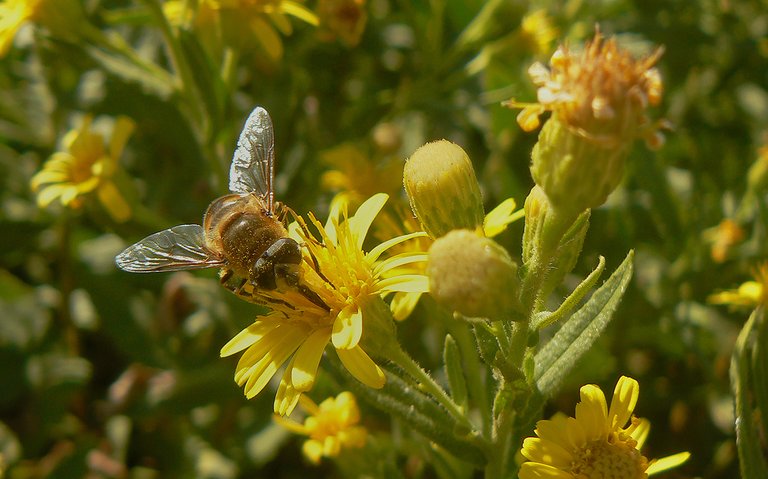
The fly in this photograph feeds on nectar and mimics a bee. This is the Eristalis tenax, a species from the Syrphidae family. In the upper left corner of the following photograph ...
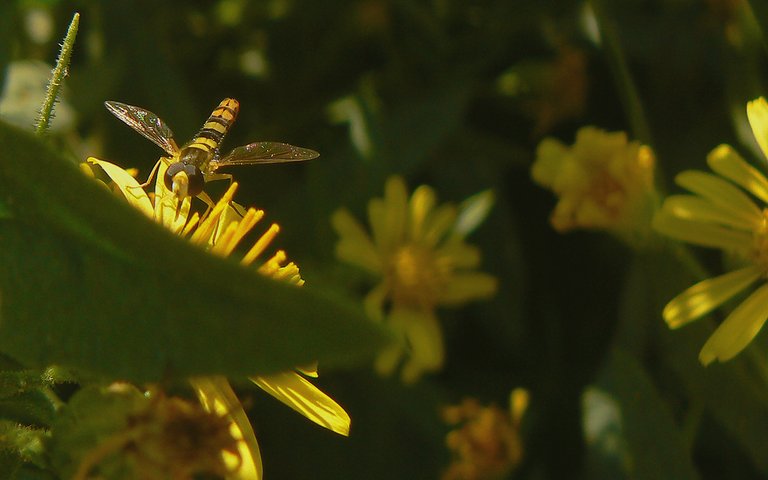
... you can see another species from the same family. This is the Sphaerophoria scripta.
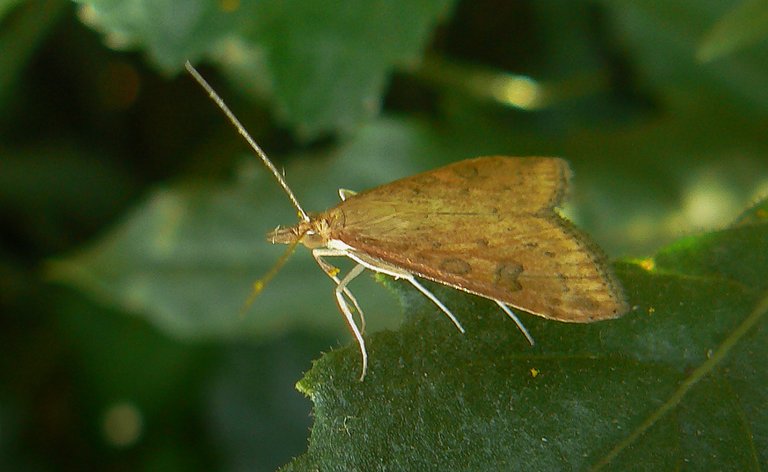
This small moth was photographed in the shade, among the lower leaves of the plant. Udea ferrugalis is the name of the species. The family is Crambidae.
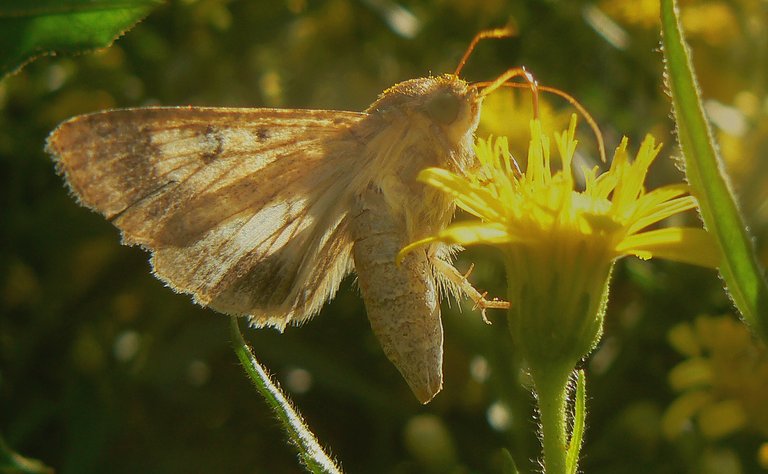
The moth in this photograph is enjoying the nectar. Can't tell you the name of the species, but the family is definitively Noctuidae.
Here you can see the very common cabbage white butterfly. (Pieris rapae). With plenty of cabbages and broccoli in the nearby fields, the larvae have more than enough food to grow and turn into lovely butterflies. In the following photograph ...
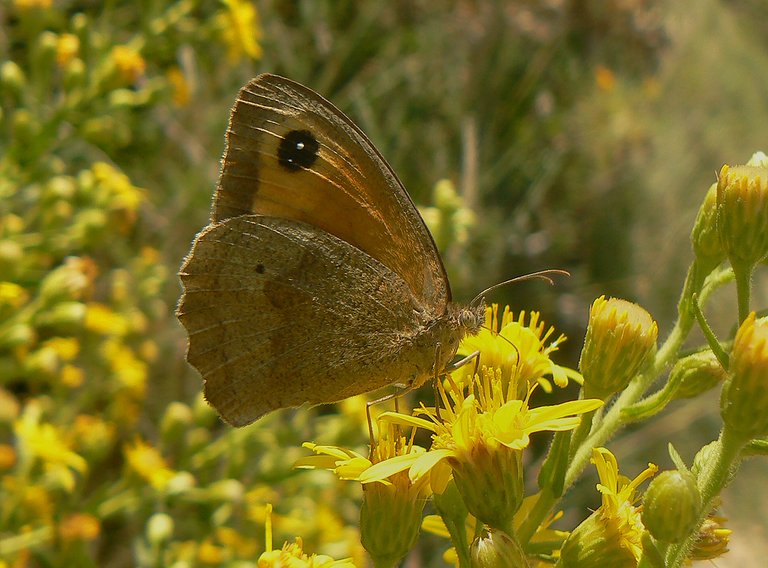
... you can see another butterfly that landed on the flowers to get some nectar.
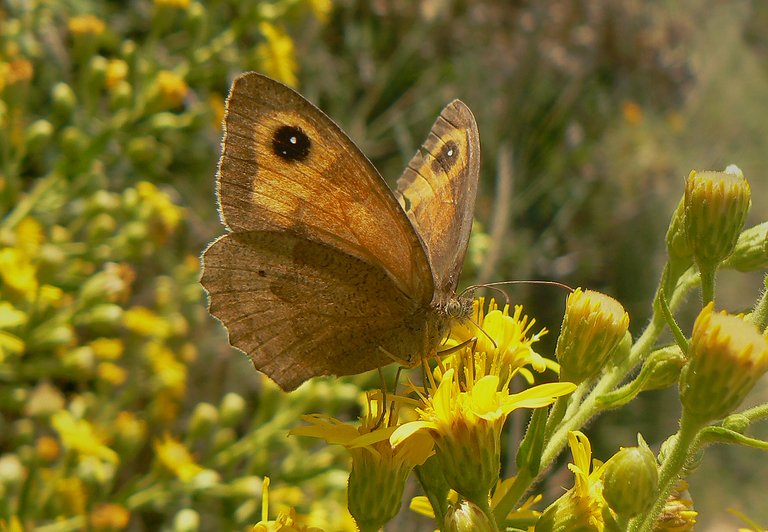
This is the Maniola jurtina, commonly known as the meadow brown.
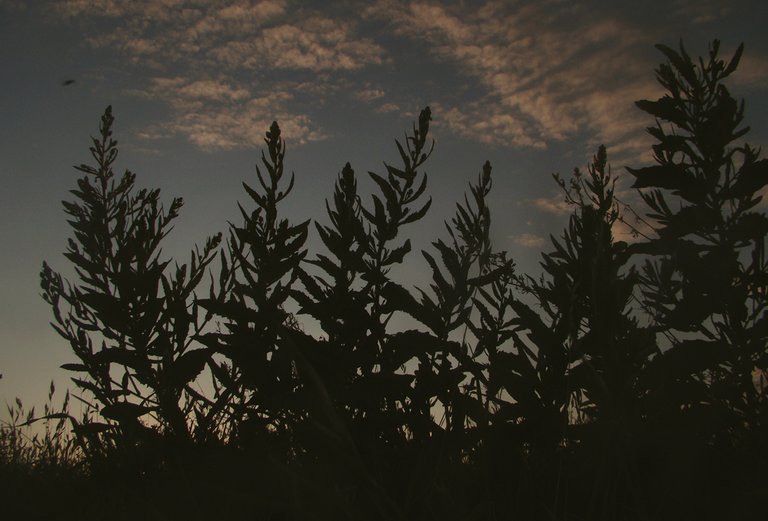
In this last photograph, you can see the silhouettes of Dittrichia viscosa at the end of the day.
The photographs weren't taken these days, at the end of this summer. Nope. These are old shots from 2016. I had only a small, not very good compact camera with me. And I didn't use the macro equipment here, because six years ago, I didn't have any.
The following links will take you to the sites with more information about some of the protagonists of this post. I found some stuff about them there.
https://en.wikipedia.org/wiki/Dittrichia_viscosa
https://en.wikipedia.org/wiki/Pieris_rapae
https://en.wikipedia.org/wiki/Lampides_boeticus
https://en.wikipedia.org/wiki/Holly_blue
https://www.buzzaboutbees.net/great-banded-furrow-bee-halictus-scabiosae.html
https://www.leps.it/
AND THAT'S IT. AS ALWAYS IN THESE POSTS ON HIVE, THE PHOTOGRAPHS ARE MY WORK - THE END.
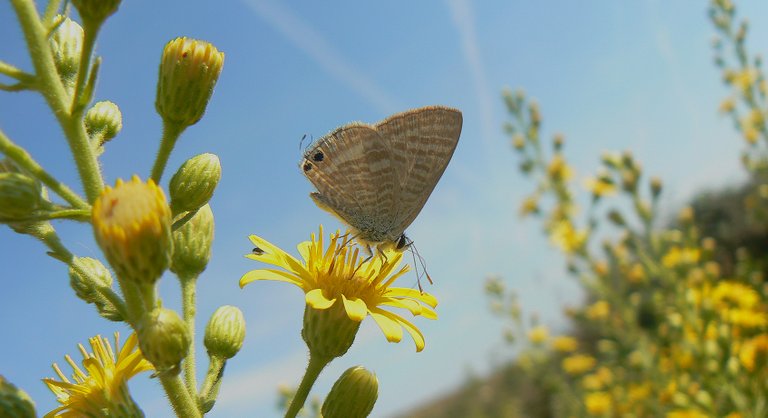

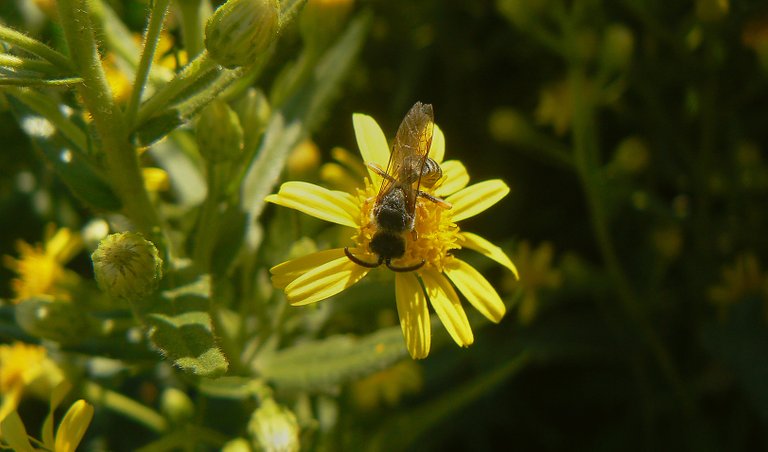
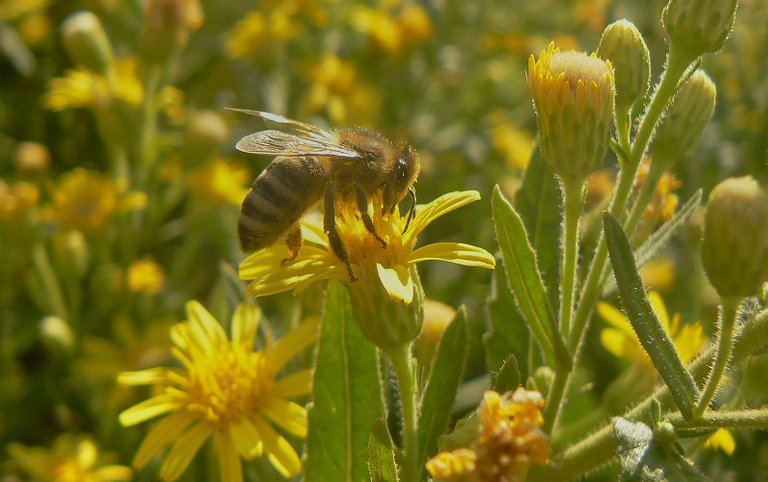
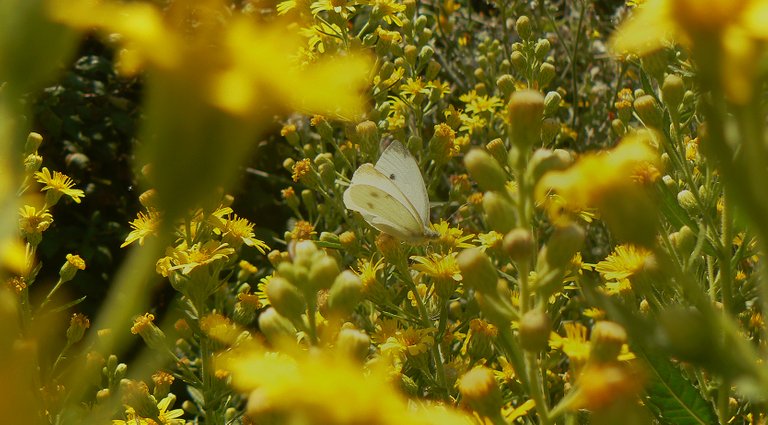
You have added a lot of information about this butterfly that makes a lot of sense. Really admirable
The pictures as really nice as always and thanks for sharing.
Beautiful man very sharp photos.😍😍
The butterflies are beautiful. Nice photos. Thank you for the information. 🦋🐝
Wow! Very nice photos! Six years ago!! They look like from yesterday’s! The camera did a very beautiful job! These yellow shades are very soothing for the eyes!
You have so many butterflies there!
This year I saw very few butterflies and fireflies in my garden! Something odd happened in nearby neighborhood!
Hope you don’t have the heat wave or drought!
Nice pictures.
Beautiful flowers with epitome of nature beauty
Loved this post of yellow flowers and many butterflies and insects.
Stunning photographs as always Borjan. Really love how varied the butterflies, bees and flies are, you had a real treat with these. My favourite is the Meadow Brown. Thank you for sharing them.
Isn't Hedera helix a type of ivy?
Yes. 🙂The very common ivy that can be found on the old buildings and trees.
I've always liked Ivy. Apparently it's really hard to get rid of once it gets a foothold so every building I've been in I've been too scared to plant it. Maybe one day.
Here in my city we have some late bloomers too... second spring, briefly!
Yay! 🤗
Your content has been boosted with Ecency Points, by @borjan.
Use Ecency daily to boost your growth on platform!
Support Ecency
Vote for new Proposal
Delegate HP and earn more
Congratulations @borjan! You have completed the following achievement on the Hive blockchain and have been rewarded with new badge(s):
Your next target is to reach 37000 upvotes.
You can view your badges on your board and compare yourself to others in the Ranking
If you no longer want to receive notifications, reply to this comment with the word
STOPTo support your work, I also upvoted your post!
Check out the last post from @hivebuzz:
Very beautiful and great shoot bro. Yellow flower and butterfly is perfect and see beauty. I want to know a things is a butterfly not run away when you take photo?
We appreciate your hard work and dedication, your post has been manually curated on behalf of the community PETALS it will be added to the weekly curation report. Thanks and keep up the good work !!
Thank you 🙂
What a very educative post. I didn't know there where bees, where their females are workers? I thought it was one female (queen) per Hive😂.
Yes. There are many species of bees. Some of them are solitary others live in various types of bee organizations. 🙂
Wow, good to know
Hello @borjan. That must have been a very good camera, of course you are also a good photographer. Congratulations and thanks for other wonderful photos.
Thanks. 🙂 Glad you like the post.